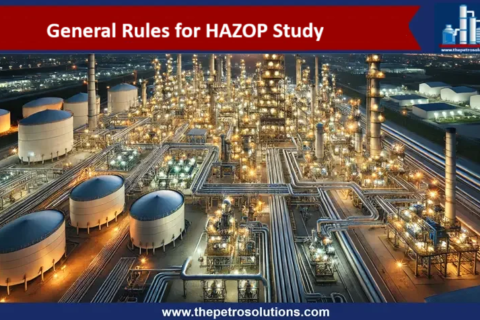Understanding Risk Receptors: Safeguarding People, Environment, and Assets
In process safety, the concept of a risk receptor plays a pivotal role in identifying and mitigating potential hazards. A risk receptor refers to an entity—such as a person, environment, or asset—that could be negatively affected by potential hazards or failures in a system. In simpler terms, it is the element exposed to risk due to system faults or unsafe conditions. Recognizing risk receptors allows safety engineers to prioritize safety measures and implement targeted strategies to minimize harm. Let’s delve deeper into the significance of risk receptors and their categorization.
What Are Risk Receptors?
A risk receptor refers to an entity (such as a person, environment, or asset) that could be negatively affected by potential hazards or failures in a system. In other words, it’s the element exposed to risk due to potential system faults or unsafe conditions. The concept of a risk receptor helps identify the specific targets of safety measures, allowing for targeted risk assessment and mitigation strategies to protect them from harm.
Categories of Risk Receptors
Risk receptors can broadly be categorized into three groups:
1. Human Risk Receptors
Human beings are often at the forefront of safety considerations. Whether it’s workers, operators, or the general public, people can face significant risks from unsafe conditions or system failures. Examples include exposure to toxic chemicals in industrial settings, physical injuries from machinery malfunctions, or even psychological stress from unsafe work environments. Protecting human receptors is not only a moral obligation but also essential for compliance with safety regulations and maintaining workforce morale.
2. Environmental Receptors
Environmental receptors include ecosystems, habitats, and natural resources that could be adversely impacted by hazardous events. For instance, a chemical spill could contaminate water sources, harming aquatic life and disrupting ecosystems. Similarly, emissions from industrial plants can degrade air quality, affecting both flora and fauna. Safeguarding environmental receptors is crucial for maintaining biodiversity and ensuring sustainability.
Further, types of harms: harm to significant populations of wildlife, especially in the long term, due to release of substances (e.g. harmful gases, hot water effluent). Illness of persons offsite (as an indirect result of release of harmful substances, e.g. contamination of watercourses).
3. Asset Receptors
Assets such as infrastructure, machinery, or other capital investments can also serve as risk receptors. Damage to these assets can lead to significant financial losses, operational downtime, and even cascading failures in interconnected systems. For example, a fire in a manufacturing plant could destroy expensive equipment, halt production, and disrupt supply chains. Protecting asset receptors ensures the longevity and reliability of critical systems.
4. Reputation of the Company
Types of harms, due to reputation loss of the company includes, adverse publicity, loss of shareholder value, requirement for public notification or evacuations. A damaged reputation can lead to loss of customers, reduced investor confidence, legal actions, and long-term financial losses.
5. Legal
Types of harm, that may be considered are; fines and compensation as a result of an incident, cost of defending legal cases and Jailing of senior staff. Potential for legal consequences arising from non-compliance with safety regulations, industry standards, or failure to ensure safe operations. In extreme cases, withdrawal of operating license, and environmental licenses.
The Importance of Identifying Risk Receptors
Identifying risk receptors is a foundational step in risk management. By pinpointing the entities at risk, safety professionals can:
- Prioritize Risks: Not all receptors are equally vulnerable or critical. Identifying which ones require immediate attention helps in allocating resources efficiently.
- Design Targeted Controls: Tailored safety measures can be implemented to address specific vulnerabilities. For example, installing personal protective equipment (PPE) for workers or creating buffer zones around environmentally sensitive areas.
- Enhance Resilience: Understanding risk receptors helps in building systems that are more resilient to failures, thereby reducing downtime and mitigating potential losses.
Strategies for Protecting Risk Receptors
To safeguard risk receptors effectively, it’s essential to follow a structured approach:
1. Risk Assessment
Conduct a thorough risk assessment to identify potential hazards and evaluate their impact on different receptors. Tools such as Failure Mode and Effects Analysis (FMEA) or Hazard Operability Study (HAZOP) can be instrumental in this process.
2. Implement Mitigation Measures
Based on the assessment, implement targeted measures to mitigate risks. This could involve engineering controls, administrative protocols, or emergency response plans.
3. Monitor and Review
Continuous monitoring and periodic reviews are essential to ensure the effectiveness of mitigation measures. Regular audits and updates to the risk management plan help in addressing emerging threats.
Real-World Applications of Risk Receptor Analysis
The concept of risk receptors is widely applied across various industries:
- Chemical Manufacturing: Ensuring worker safety by managing exposure to hazardous chemicals.
- Oil and Gas: Protecting marine ecosystems from potential oil spills.
- Construction: Preventing damage to nearby infrastructure during excavation or demolition activities.
References:
Functional Safety from Scratch by Peter Clarke xSeriCon
Certified Functional Safety Professional (FSP, TÜV SÜD), Certified HAZOP & PHA Leader, LOPA Practitioner, and Specialist in SIL Verification & Functional Safety Lifecycle, with 18 years of professional experience in Plant Operations and Process Safety across Petroleum Refining and Fertilizer Complexes.
- Nasir Hussainhttps://thepetrosolutions.com/author/admin/
- Nasir Hussainhttps://thepetrosolutions.com/author/admin/
- Nasir Hussainhttps://thepetrosolutions.com/author/admin/
- Nasir Hussainhttps://thepetrosolutions.com/author/admin/






